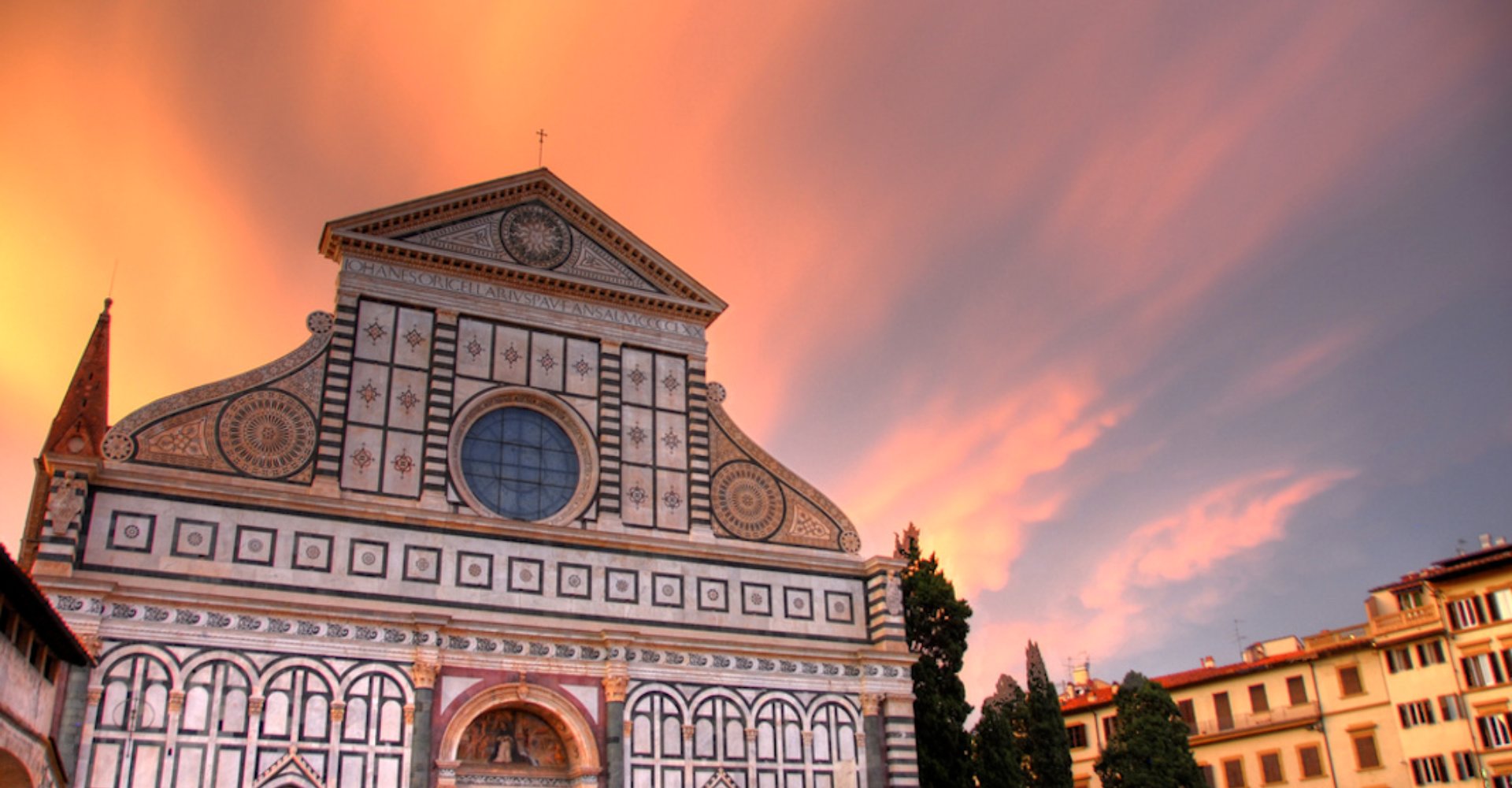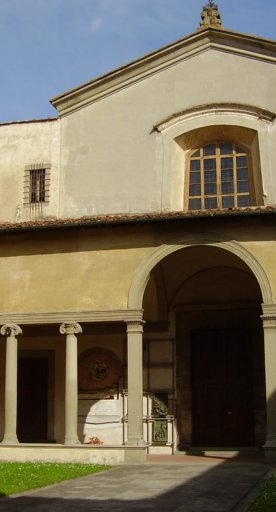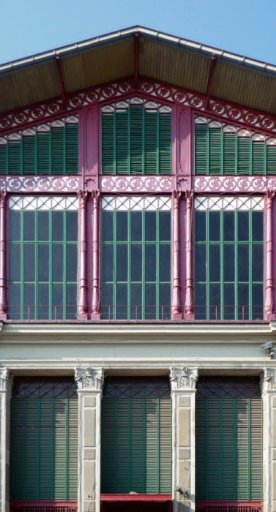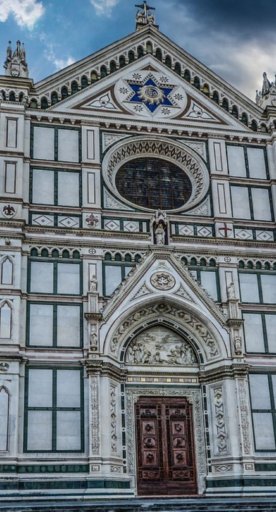Basilica of Santa Maria Novella
One of the most important churches in Florence, it houses masterpieces by Masaccio, Giotto, Botticelli, Filippino Lippi
The Basilica of Santa Maria Novella, with its colorful marbles, elegant shape and the works of art it houses, is one of the most important churches in Florence. In the enchanting setting of Piazza Santa Maria Novella and a short walk from the station of the same name, the basilica and adjoining convent were founded by the Dominicans in the 13th century starting from the small church of Santa Maria delle Vigne (St. Mary of Vineyards), so called because at the time it was surrounded by cultivated countryside.
The splendid white and green marble facade was begun in 1350, starting with the lower part in Romanesque style, while the upper part was not completed until 1470 by Leon Battista Alberti.
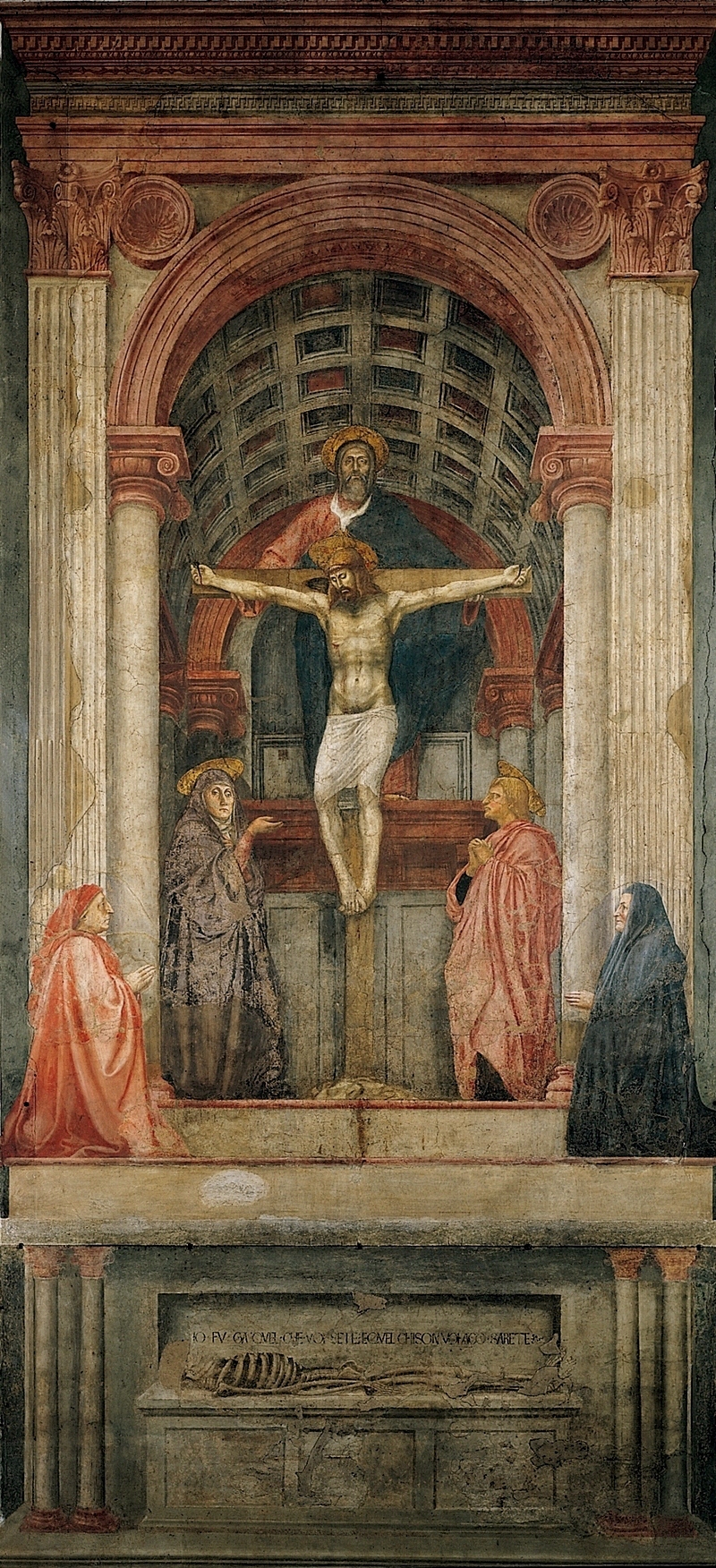
The interior of the church, the first example of Gothic architecture in Florence, is a treasure trove of masterpieces.
It starts with the Trinity by Masaccio of 1424, the fresco with which the use of perspective was first experimented, one of the most important works of Renaissance art.
At the end of the nave stands the great Crucifix by Giotto of 1290, set at a height of 4.5 meters, a splendid early work by the artist.
In the Strozzi Chapel, the frescoes by Filippino Lippi on the life of Saint John the Evangelist can be admired.
The Tornabuoni Chapel is frescoed by Domenico Ghirlandaio and artists from his workshop, where Michelangelo was apprentice, who most likely worked on this cycle depicting episodes from the lives of the Virgin and St. John.
Then there is the Nativity, a youthful work by Sandro Botticelli, and, in the Gondi Chapel, the Crucifix by Filippo Brunelleschi, the only wooden sculpture of great architect, which, according to Vasari, was carved as a challenge in response to the one of Donatello, which is located in the Basilica of Santa Croce.
The monumental complex of Santa Maria Novella
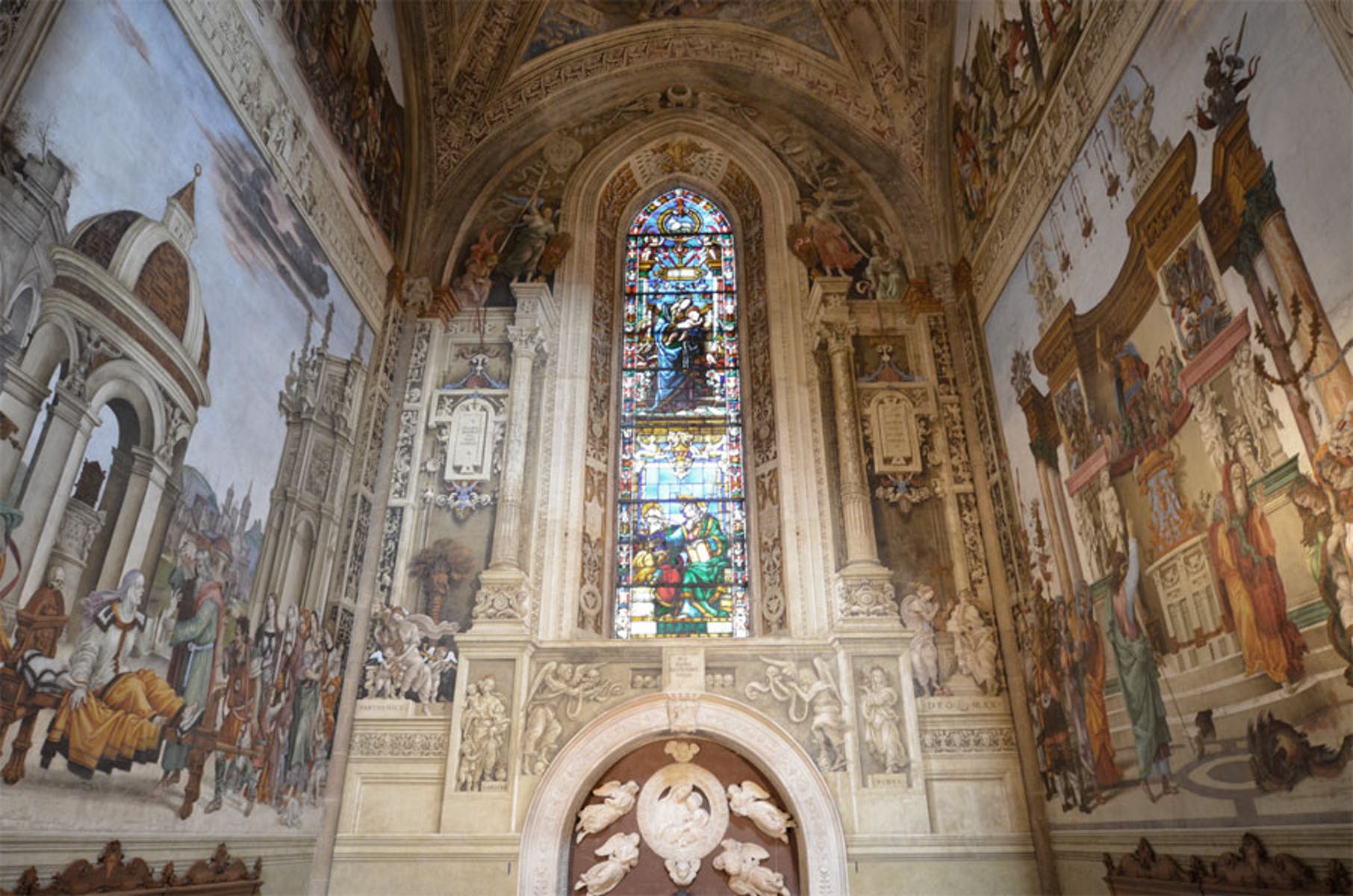
It is possible to visit the entire Monumental complex of Santa Maria Novella, also accessing all the Dominican rooms, and the cloisters, starting with the famous Green Cloister, whose marvelous frescoes from the first half of the 15th century - painted by Paolo Uccello and his collaborators - are on display in the Refectory after the delicate restoration work conducted by the Opificio delle Pietre Dure.
A corridor connects the Green Cloister with the Little Cloister of the Dead, a space that had a predominantly cemetery function, as evidenced by the remains of the fine fresco decorations of the burial chapels and numerous tomb slabs from various eras.
The itinerary continues with the hall of the ancient chapter, known as the Spanish Chapel, whose cycle - frescoed by Andrea di Bonaiuto - is one of the loftiest and most spectacular representations of the Dominican mission, and the 14th-century Great Cloister, so named because of the extraordinary size of its sides, consisting of fifty-six rounded bays.
It was built between 1340 and 1360 with the collaboration of several Florentine families, whose coats of arms can be seen carved on the pillars of the loggia.
Two centuries later other noble families contributed, together with Grand Duke Cosimo I de’ Medici, to decorate all its walls with a grand cycle of frescoes, painted by more than fifteen painters from the Florentine Academy.
Another jewel of painting in the transitional phase between Renaissance and Mannerism is the Chapel of the Pope, prepared for the solemn entry of Pope Leo X de’ Medici into Florence on November 30, 1515.
The decoration was entrusted to Ridolfo del Ghirlandaio, who is responsible for the scene of the Coronation of the Virgin on the side opposite the door. Later the work was completed by Jacopo Carucci known as Pontormo, who created both the figures of the Putti on the barrel vault and the celebrated lunette with the Veronica on the entrance wall, one of the highest moments of 16th-century Florentine painting.
Accessibility information: feelflorence.it
